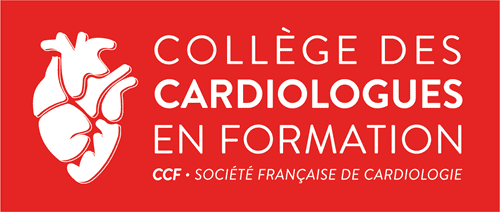Suivez nous sur les réseaux sociaux
Cet outil a vocation à informer, diffuser l’information auprès des jeunes cardiologues (internes, assistants, chefs de cliniques, jeunes praticiens, etc.), et faciliter les échanges.
Voici un aperçu rapide des sujets abordés dans cette publication :
Toutes nos publications
Une question ?
Publications
Supervised Machine Learning using Environmental Factors to Predict In-Hospital Outcomes in Acute Heart Failure Patients
Voici un aperçu rapide des sujets abordés dans cette publication :
Supervised Machine Learning using Environmental Factors to Predict In-Hospital Outcomes in Acute Heart Failure Patients
Benjamin Sibilia, Solenn Toupin, Nabil Bouali, Jean-Baptiste Brette, Arthur Ramonatxo, Guillaume Schurtz, Kenza Hamzi, Antonin Trimaille, Emmanuel Gall, Nicolas Piliero, Alexandre Unger, Stéphane Andrieu, Trecy Gonçalves, Fabien Picard, Vincent Roule, François Roubille, Sonia Houssany-Pissot, Océane Bouchot, Victor Aboyans, Reza Rossanaly Vasram, Thomas Bochaton, Damien Logeart, Alain Cohen Solal, Jérôme Cartailler, Alexandre Mebazaa, Jean-Guillaume Dillinger, Patrick Henry, Théo Pezel on behalf of the Investigators of ADDICT-ICCU study
European Heart Journal – Digital Health, 16 December 2024, ztae094
DOI: 10.1093/ehjdh/ztae094
Abstract
Aims
While few traditional scores are available for risk stratification of patients hospitalized for acute heart failure (AHF), the potential benefit of machine learning (ML) is not well established. We aimed to assess the feasibility and accuracy of a supervised ML model including environmental factors to predict in-hospital major adverse events (MAEs) in patients hospitalized for AHF.
Methods and Results
In April 2021, a French national prospective multicentre study included all consecutive patients hospitalized in intensive cardiac care unit. Patients admitted for AHF were included in the analyses. A ML model involving automated feature selection by least absolute shrinkage and selection operator (LASSO) and model building with a random forest (RF) algorithm was developed. The primary composite outcome was in-hospital MAE defined by death, resuscitated cardiac arrest, or cardiogenic shock requiring assistance. Among 459 patients included (age 68 ± 14 years, 68% male), 47 experienced in-hospital MAE (10.2%). Seven variables were selected by LASSO for predicting MAE in the training data set (n = 322): mean arterial pressure, ischaemic aetiology, sub-aortic velocity time integral, E/e′, tricuspid annular plane systolic excursion, recreational drug use, and exhaled carbon monoxide level. The RF model showed the best performance compared with other evaluated models [area under the receiver operating curve (AUROC) = 0.82, 95% confidence interval (CI) (0.78–0.86); precision-recall area under the curve = 0.48, 95% CI (0.42–0.5), F1 score = 0.56). Our ML model exhibited a higher AUROC compared with an existing score for the prediction of MAE (AUROC for our ML model: 0.82 vs. ACUTE HF score: 0.57; P < 0.001).
Conclusions
Our ML model including in particular environmental variables exhibited a better performance than traditional statistical methods to predict in-hospital outcomes in patients admitted for AHF.


